The Webcomic Overlook #55: Jump Leads

What is it with science fiction’s obsession about getting lost?
You’d think that, a hundred years from now, scientists would’ve created something that would put GPS to shame. Or, that in a universe governed by either an interstellar federation or a corporation that controls wormhole jump points, there would hopefully be enough regulations and protocol to keep hapless starships from getting stranded in the middle of nowhere.
But no.
The Voyager, due to no small part of the Captain’s ridiculous interpretation of the Prime Directive, gets stranded 75 light years in the Delta Quadrant. The Robotech series is partially based on the Super Dimensional Fortress accidentally teleporting to the outer rims of the Solar System and the valiant crew trying to make it back to Earth. Sam Beckett bounced from body to body in Quantum Leap, clueless for the most part as to why he ended up in a certain period of time. And the family from Lost in Space … well, you get the idea.
Which bring us to the central premise of Jump Leads. The series was created by head writer Ben Paddon and an artist from Moscow who goes by the name of JjAR. Mssr. Paddon can’t take total credit, though: Jump Leads, like a continuing series, is written by a stable of writers, and Paddon, thus far, wrote the first two issues. Other writers with their names attached to the comic are Psycheverse associates Andrew Taylor, Euan Mumford (who wrote Issue 3), and Paul Varley.

The comic made its debut on July 4, 2007… a date of incredible significance! For Americans, anyway. It shouldn’t make much difference to Jump Leads, though, because the comic is so very British. The speech patterns are written so well that you could hear the accent just by reading the written dialogue.
Mind you, this is not a bad thing. For me, Jump Leads almost immediately recalls Dr. Who, Red Dwarf, The Hitchhiker’s Guide to the Galaxy, and other stellar sci-fi series infused with their peculiarly British sensibility. Perhaps there are other prominent series that hew closer to Yankee standards like Star Wars or Star Trek … and why shouldn’t they? Those two particular examples were in turn influenced by Horatio Hornblower and the European Theater of WWII. But the arbiters of British culture (i.e., the BBC) lead us Yanks to believe that their sci-fi consists of personal, character driven affairs. More power to them, I say.
The main characters of Jump Leads are pair of grunts named Richard Llewellyn and Thomas Meaney. They’re sorta the Bert and Ernie of the sci-fi set, minus the obsession with pigeons and rubber ducks. Llewellyn is a rail-thin fellow with a “‘pretentious ‘git’ goatee” (not my words; that’s how it’s described on the cast page). The man’s face forms a permanent scowl, and every word out of his mouth is brimming with sarcasm. If there were a Jump Leads movie ever made, it would be a shame if Llewellyn wasn’t played by Alan Rickman.
Thomas Meaney, on the other hand, is an everyman — a far more sympathetic character than his sneering counterpart. I have a hard time trying to peg down what British actor he reminds me of. Simon Pegg? Craig Charles from Red Dwarf? He’s far less likely to enjoy laying about and letting thing happen and far more likely to help out a friend if they’re in trouble. While initially he seems scatterbrained, Meaney’s actually more like a first year college student, where the seemingly limitless possibilities ahead are still exciting and fresh.

I know what you’re saying. You’re going, “El Santo, is this some webcomic about interstellar janitors? Because with those jumpsuits, they look like waste management employees. The fella with the terrible red mullet isn’t helping matters any.” Close, my friend, but no cigar. Llewellyn and Meaney are Leads, which I assume is pronounced like the male component of a dance couple and not like the stuff inside your pencil. Leads operate from The Hub, a black hole that allows all parallel dimensions to exists simultaneously. They’re a sort of police force, traveling from one dimension to another and rounding up folks who don’t belong there. Leads are chosen partially because they’re “non-multiversal variables.” That is, they’re one of the few people whose actions haven’t lead to the creation of a parallel universe, and are thus unique. This is sorta a downer counterpoint to Meaney’s brimming enthusiasm, what with genetic disposition taking precedence over skill. But, hey, that’s what determines winners in basketball games and beauty contests, amirite?
Now, when you start to get on a discussion on dimensional police, it leads to some unsavory avenues. Particularly, those temporal agents from Star Trek, the worst thing to happen to the franchise since the episode where Paris and Janeway turned into salamanders. Fortunately, Ben Paddon and the rest of Team Jump Leads make it very clear that dimension hopping is not the same as time traveling. If Llewellyn and Meaney find themselves in an earlier time, it’s because they’ve landed in a place that’s managed to replicate that sort of environment due to any set of external circumstances. Time traveling will not be a factor in their adventures. At this point, I breathe a sigh of relief, since this means that we’re not going to be subjected to a set of needlessly convoluted rules, nor are we guided through a set of moralistic conundrums that prevent us from killing Hitler.
The story is initially laced with some absolutely clunky pop culture references. There’s a guy, for example, named Captain Whedon, and his spaceship is named the Serenity — har de har har. Nor does this predilection completely abate in later installments. A recent page, for example, introduces a character named “Nimoy.” Team Jump Leads, did you not know that George Lucas and his somewhat racist aliens ruined Leonard Nimoy references for everyone?

Llewellyn and Meaney board a a jumpship named The Flurry (har har). Unsurprisingly, the mission goes awry not soon after. The boys make a narrow escape, but they come to the sordid realization that they have no idea how to get back to The Hub. Meaney is a rookie. Llewellyn, while nominally a veteran, hasn’t had much chance to practice his training in the real world. Thus, the boys find themseves doomed to bounce from world to world in a futile hope that the next dimension they hop to will be the right one. I’d make a Cross Time Caper reference here, but I’m sure all of two of you readers will actually get it.
This dimension hopping turns out to be much harder for Meaney than it is for Llewellyn. Llewellyn is in no particular hurry to get home. For yet unknown reasons, he doesn’t care much about being a Lead, yet he presses on with the program. Meany, however, is very concerned about what this means for his career. Plus, he has an additional incentive: he left a childhood sweetheart at home.
Here, Jump Leads displays its greatest strengths: its excellent characterization. The two protagonists feel deep and three dimensional. Jump Leads ropes in the reader with a sense that there are many qualities to these characters beyond their initial appearances, and that the true personalities and motivations will unfold over the course of the story.
On the art front, Jjar’s illustrations, if anything, are distinct. (And I really wish he’d used a more pronounceable handle. I think I’m starting to develop a stuttering problem. Also, I am going to assume “Jjar” is a he. If any of you have information otherwise, I’ll go ahead and edit this portion of the review.) His settings, mostly sci-fi, tend to be covered in metal, tubes, wires, and other standards of the genre. However, he puts his own stylized spin: somehow, metals seem softer. Shell casings bend, and vehicles seem to be rounded off at the edges rather than jutting at harsh, flat angles — the sci-fi standard since 2001 captured all our imaginations. It’s not a drastic change, really, but it does capture the more comic elements of the story rather nicely. Also, I’m pleased to note that Jjar has mastered the art of catastrophic damage. This is a must for sci-fi artists, since I’m hard-pressed to think of any other genre that has such a strong love for blowing things up.

His characters look like the ones you’d find in Asterix, only more severe and angular. I suppose he should be applauded for designing characters who aren’t very attractive and tend to appear like the type of folks that you and I would see every day. It was, however, rather difficult for me, at least, to look past Meaney’s “ready for skateboard graphics art” face or Llewellyn’s general resemblance to a billy goat.
Meanwhile, I regret to report that the story (or is it stories?) hasn’t really captured my imagination. Let’s see, counting the Hub, Meaney and Llewellyn spend a majority of the plot in three different dimensions (neatly breaking down to one for each issue). All of those dimensions thus far have been set in fairly similar sci-fi worlds. Issue Two takes place aboard a starship, while Issue Three happens on a technologically advanced world that bears some similarity to our own. However, if didn’t know any better, all three places could be from the exact same dimension. I don’t know… doesn’t seem like a waste of a perfectly good premise? This is a far cry from what’s promised the story’s premise, which implies that we’ll soon be seeing worlds populated by wizards and magic! To be fair, the story just started, so there’s still a lot of time to visit strange new corners of the very infinite number of universes, right?
I will say, though, that there are parts of the story where Team Jump Leads genuinely surprises us. I won’t discuss those points in this review, for fear of the Spoiler Police suddenly materializing in a spherical ship to give me a stern talking to. However, I think it’s safe to say that at least in one instance, the story took a completely unexpected yet satisfying turn that didn’t totally derail the events that happened before hand.
So in the end, did I like Jump Leads? Yes. I find that strong characters are an absolute boon for series that are in it for the long term. You can run some absolutely telegraphed plot lines. You can feature ugly art. But as long as me, the reader, has something that keeps me interested in the fates of the characters, then you’ll have me coming back every time. Jump Leads has two of the best. While the stories thus far have been fairly run of the mill, I’m keeping up the hope that there’s something suitably grand and epic in store for the readers in the future.
Rating: 4 stars (out of 5)




Posted on September 15, 2008, in 4 Stars, action webcomic, adventure webcomic, sci-fi webcomic, The Webcomic Overlook, WCO Big Review, webcomics. Bookmark the permalink. 4 Comments.














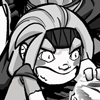


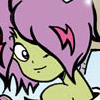




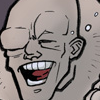











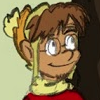



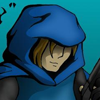
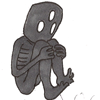











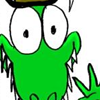


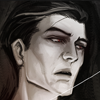
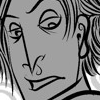




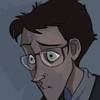














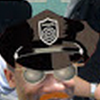





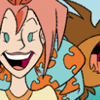
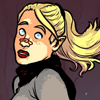



















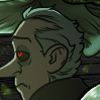


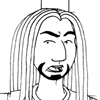


And as of now, the webcomic is offline. jump-leads.com doesn’t resolve, and soulgeel.com is now some dating site.
Archive.org got most of it, except Issue 2 page 5, Issue 2 page 11.
The entire comic can now be found at JumpLeads.zone, along with bonus content!
Pingback: Jump Leads » Archive » Jump Leads Review at The Webcomic Overlook
Pingback: Top Posts « WordPress.com